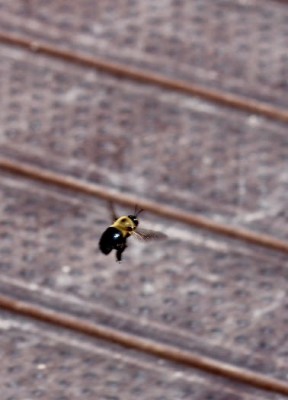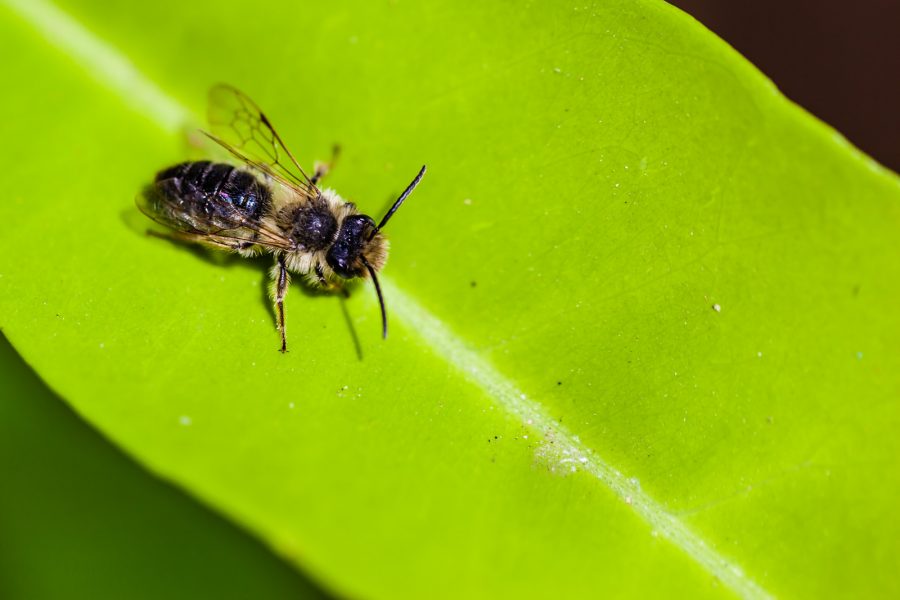When we think of bees, we often picture honey bees. We imagine a swarm buzzing around a honeycomb hive.
But honey bees are just one of 400 different types of bees in Ontario (and we’re discovering new bee species all the time!).
And honey bees aren’t even a native species.
In fact, honey bees are relatively new to Ontario. They were an agricultural import, brought to North America for honey production and crop pollination. Before honey bees crossed the ocean, Ontario’s major pollinators were native bees, whose behaviour is often very different from the stereotypical honey bees.
Here are five other types of bees buzzing around our parks:
Bumble bees

Like honey bees, Ontario’s 16 species of bumble bee are social. Females live together in a hive, but rather than creating honeycombs, they make wax honey “pots.” If you look inside a bumble bee nest, you’ll find little wax “barrels” full of honey.
Carpenter bees
These are large bees, and look similar to bumble bees.
Carpenter bees have developed a reputation for drilling into wooden siding to make their nests, but in parks, they take advantage of our dead standing trees instead.
Leaf-cutter bees

You may have seen signs of leaf-cutter bees around your garden or campsite. If you see a small crescent cut out of young leaves (especially on rose leaves), you may have been visited by leaf-cutters.
Leaf-cutter bees make their nests in small tunnels in wood. They pack these small spaces with the leaves they gather, making a cigar-shaped space to place pollen and eggs. When the eggs hatch, the young eat the pollen.
Mining bees

This type of bees got their names because they dig burrows in the ground. On your campsite, you may see what look like ant mounds, but with a larger hole and perhaps a bee flying in and out.
Mining bees pack their burrows (which are almost like tiny cave systems) with balls of pollen, then lay an egg on each ball. The pollen is food supply for the bee larva.
Sweat bees

Sweat bee nests are hard to find, but on hot summer days, sweat bees will often visit you. These small bees like the salt in your sweat and will land on your arms to drink it.
Like leaf-cutter bees, they typically make their nests in dead fallen logs (this is one reason we ask campers not to gather/burn the brush around their campsite).
Bee biodiversity
Protecting our native bees species is a key part of protecting our province’s biodiversity. Each bee species is critical for the pollination of crops, backyard gardens, and park wildflowers. They provide valuable food for other wildlife, and are an important cog in Ontario’s ecosystems.
Want to help?
Report sightings on websites like Bumble Bee Watch, or plant a pollinator garden (bees love plants with colourful flowers, such as milkweed, asters, and trilliums).
